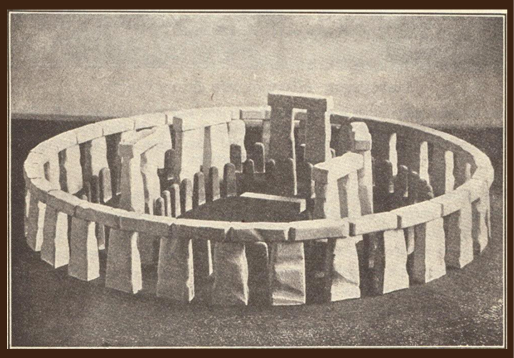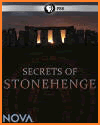| Stonehenge |
|---|
| www.studenthandouts.com ↣ World History ↣ Neolithic Revolution ↣ Neolithic Maps and Pictures |
 Stonehenge, part of the outer circle. The complete outer circle is about 100 feet across, and contained originally thirty upright stones, of which half were still in place in 1920. In that year the stones that had fallen were re-erected; but some had been taken away in past ages for use in other structures. Salisbury Plain, England.
Stonehenge, part of the outer circle. The complete outer circle is about 100 feet across, and contained originally thirty upright stones, of which half were still in place in 1920. In that year the stones that had fallen were re-erected; but some had been taken away in past ages for use in other structures. Salisbury Plain, England.Click here to enlarge. Stonehenge, located on England's Salisbury Plain, is one of the most iconic prehistoric monuments in the world. Constructed in phases between 3000 and 2000 B.C.E., this enigmatic stone circle reflects the advanced engineering and astronomical knowledge of Neolithic and Bronze Age societies. The monument consists of massive sarsen stones, some weighing up to 30 tons, arranged in a circular formation with lintels, and smaller bluestones transported over 150 miles from Wales.  The purpose of Stonehenge remains debated, but evidence suggests it served as a ceremonial site, astronomical observatory, and burial ground. Its alignment with the summer and winter solstices indicates a connection to solar and lunar cycles, possibly used for rituals or agricultural calendars. Human remains found nearby suggest it was also a place of ancestor worship.
The purpose of Stonehenge remains debated, but evidence suggests it served as a ceremonial site, astronomical observatory, and burial ground. Its alignment with the summer and winter solstices indicates a connection to solar and lunar cycles, possibly used for rituals or agricultural calendars. Human remains found nearby suggest it was also a place of ancestor worship.Stonehenge, restoration (also called a scale model). Stonehenge is located on Salisbury Plain in England. Click here to enlarge. Construction required sophisticated logistics and labor organization, demonstrating the social cohesion of early farming communities. The transport and shaping of the stones—without metal tools—show remarkable skill in woodworking, rope-making, and stone-working techniques. Today, Stonehenge stands as a testament to prehistoric ingenuity, spiritual beliefs, and communal effort. Its enduring mystery continues to inspire archaeological research and public fascination, offering glimpses into the worldview of ancient Britain. |
 |  |  |  |  |  |
| www.studenthandouts.com ↣ World History ↣ Neolithic Revolution ↣ Neolithic Maps and Pictures |








